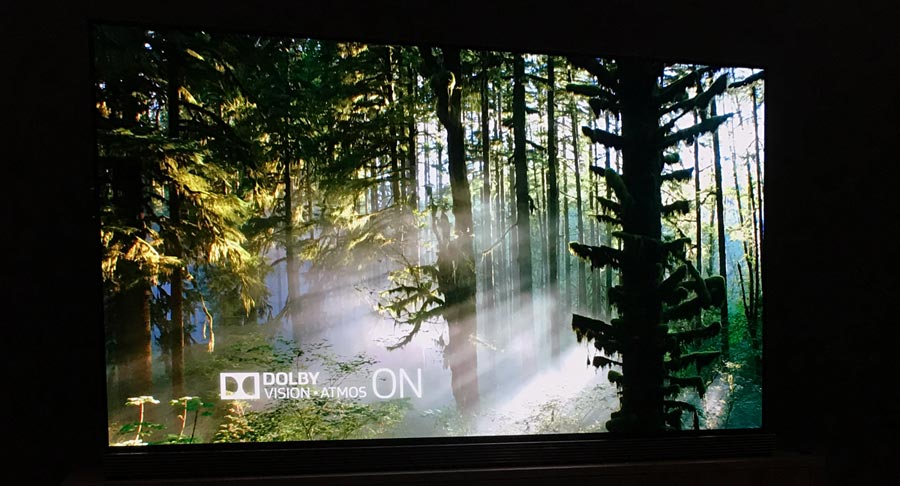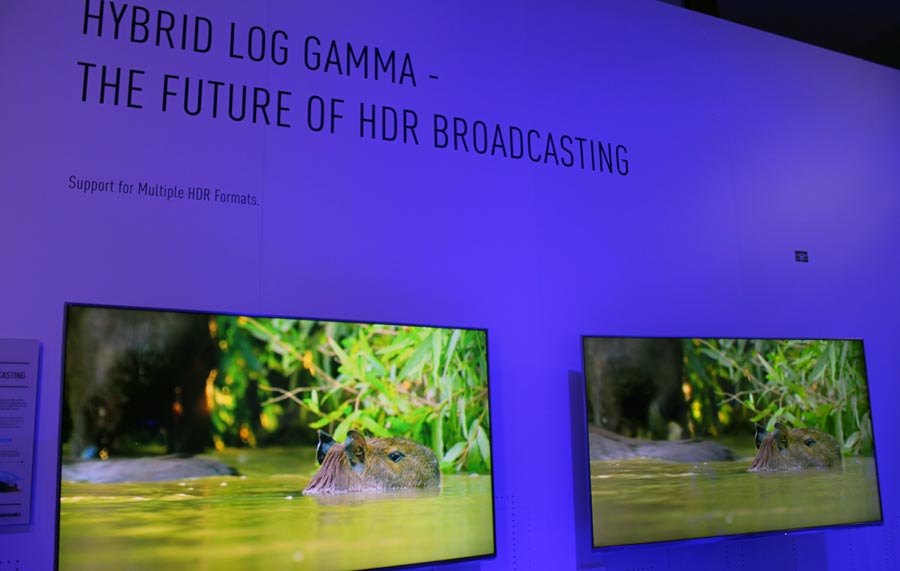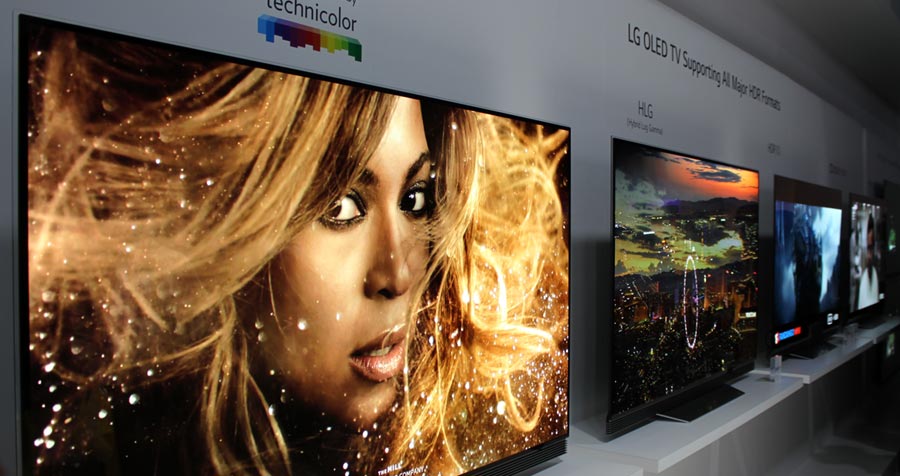In The State of HDR mid-2017 I explain what HDR video formats there are, and what brands support each, but not much about the future outlook. How strong is each format’s position? What is the sentiment in the market and the media? Let’s have a look.
HDR10
HDR10, the first HDR video format, is firmly established. It is widely supported: Every single TV brand that offers an HDR TV supports HDR10. On the content side, HDR10 is also omnipresent. It’s the default HDR format on Ultra HD Blu-ray and all OTT video streaming services with HDR content support it now, including Netflix, Amazon Video and Vudu. Also, the game consoles that can handle HDR – Sony PlayStation4 Slim/Pro and Microsoft Xbox One S/X – output HDR10.
Dolby Vision
Dolby Vision is not universally supported. Notable absentees include TV makers Samsung and Panasonic, plus movie studio 20th Century Fox, for reasons explained further down under HDR10+, but Dolby Vision is clearly established as the premium HDR format. No premium Ultra HD TV should be without it. This could become a problem for Samsung and Panasonic.
On a sideline note, Samsung of course faces another issue: the company lacks OLED TVs in their line-up. By now, OLED has already become a metaphor for a superior product, at least where contrast is concerned. In just two years time we’ve witnessed a complete reversal: In 2015, LG was alone in using OLED in their flagship TVs. Now LG, Sony, Panasonic, Philips, B&O and Loewe all use OLED in their flagship models, and Samsung is virtually alone in using LCD in their top-of-the-range TV sets.
Will Samsung give in and adopt OLED for its premium TVs at some point? It's hard to see how they could do so without losing face. Samsung is now attacking OLED display technology, which is odd if you consider that Samsung is huge in small form factor OLED displays for mobiles and tablets. Yet the manufacturer can't seem to make large-size OLED panels for UHD TVs while with LG the situation is exactly the other way round: Samsung's flagship mobiles and LG's flagship TVs use OLED while Samsung's flagship TVs and LG's top-of-the-range handsets use LCDs. At one point, Samsung had their own OLED HDTV set (not Ultra HD) but like Sony and Panasonic they abandoned OLED TV production apparently because they couldn't achieve high enough yields in the panel manufacture.
Right now, it seems as if Samsung is trying to confuse consumers. On the way to true QLED panels (self-emissive ones we'll probably see by 2019) Samsung's hijacked the QLED branding for its Quantum Dot LCDs but note how they're meticulously avoiding any mention of "LCD" in their marketing. A lot of tech journalists seem to buy it, and very few call it what it really is.
Sometimes the confusion is likely unintentional, like when Samsung’s own marketing department gets confused by their own branding of HDR10+ (their dynamic metadata HDR format) and HDR+ (their SDR-to-HDR upconversion algorithm).

Anyway, we’re drifting off. Samsung is the biggest TV maker in world, and it could prove difficult to defend their position in the high-end market segment lacking OLED as well as Dolby Vision.
In terms of content support, Dolby Vision is ramping up very well. We’re seeing Ultra HD Blu-rays with Dolby Vision getting released since the middle of 2017. Some of the most important streaming services offer Dolby Vision content, notably Netflix, Amazon Video and Vudu. And Dolby Vision just got a strong boost from the Apple TV 4K / iTunes announcement. In fact, the Apple news was also a major shot in the arm for HDR and even 4K in general. They can now be regarded mainstream; there’s no reason any longer to claim they are niche things.
Most press coverage so far mentions only two HDR formats. HDR10 and Dolby Vision. Only rarely one or two of the other three relevant formats are mentioned.
HLG
Hybrid Log Gamma, the HDR format developed by NHK and BBC, is actively used in Japan by broadcasters such as SkyPerfecTV. In Europe it is barely used yet, even by BBC itself. There has been a very brief iPlayer trial with a limited selection of Panasonic TV models supported. The content, a fragment from BBC’s Planet Earth II documentary, was in UHD but it’s not clear whether it was actual HDR. Stateside, HLG is even less present. TravelXP 4K and Insight TV, special interest channels broadcast by satellite and distributed to consumers in Europe and North America via cable and IPTV, are the first to transmit in 4K HDR using HLG.
Most TV brands now support HLG, even Samsung, reportedly, although there is no official statement about this to be found anywhere. HLG is also supported by professional equipment such as Sony cameras and monitors.
At IFA 2016, many TV brands had HLG demos. At IFA 2017 however there was less of it rather than more.
It seems BBC and NHK have focused on getting HLG into standards such as the Ultra HD Forum’s UHD Phase A spec, and BT.2100.

HLG has still got the best position for HDR broadcasting. It’s a practical short-term solution because it’s very compatible with existing workflows. Dolby Vision is ready for broadcast however. It may have the best cards for the long term.
Philips/Technicolor SL-HDR1
The joint HDR format of Philips and Technicolor, SL-HDR1 (formerly Prime Single) may suffer from the same issue: It seems the companies have been focusing their efforts mostly on getting their format into standards. SL-HDR1 is a candidate standard for ATSC 3.0, along with Dolby Vision. Philips HDR is also one of the two optional HDR formats on Ultra HD Blu-ray. Dolby Vision is the other one, while HDR10 is the mandatory HDR format. It’s taken Dolby Vision some time to get supported in authoring tools from vendors such as Scenarist, Sony DADC and Deluxe but they pulled that off and now UHD BD titles with Dolby Vision are getting released. Philips HDR is not there.
This situation is similar to the early days of DVD. Dolby Digital (AC-3) was mandated for NTSC discs while Philips had managed to get their MPEG2 Multichannel audio format accepted as the standard for PAL discs. Philips did not do a major push for content support like Dolby did, or at least not as successful. About five DVD titles with MPEG2 audio were released. The market switched to Dolby Digital after all.
Note how no Philips-branded TV currently supports the Philips/Technicolor HDR format – neither the ones made for Europe by TP Vision nor the ones for the USA market made by P&F (Funai) – only LG does so far.

HDR10+
HDR10+, the dynamic metadata extension to HDR10 developed by Samsung has been in the making for a while. The first publication about their approach was in an SMPTE paper in 2015. At NAB 2016, the company did a demo of HDR with static vs dynamic metadata, using their then proprietary format. In March 2017, Samsung announced their HDR format would be a license-free open standard. Shortly after, Amazon was announced as first content/service provider partner. At IFA in that same year, Samsung announced a sort of alliance for promoting HDR10+ with Panasonic and 20th Century Fox as the other two members. This was more or less where the public push began. Yet the message to anyone who wanted to see or learn more was “please come back at CES 2018.” The only news since then was the unofficial announcement of TP Vision, which makes Philips’ televisions for mainly the European market (not the U.S. market), that they’ll go with HDR10+ rather than Dolby Vision.
It may have cost Samsung less time to create HDR10+ than it took Dolby to develop Dolby Vision (which took about eight years from the acquisition of Brightside Technologies) but it’s evident that with HDR10+ Samsung is running years behind Dolby Vision.
Was the HDR10+ initiative driven by an aversion to paying royalties to Dolby? Samsung says the motivation is more philosophical – it’s about not taking picture control away from TV makers and end users. That may be true. Either way though, it looks as if it’s been driven more by engineering than by marketing. There isn’t even a logo yet.
There is no content yet either, but that could soon arrive via Amazon Video. Mind you, Amazon is not a member of the HDR10+ Alliance, probably mainly because Amazon Video is agnostic where it comes to HDR formats. The service also supports HDR10 and Dolby Vision.
On Ultra HD Blu-ray, HDR10+ is not yet one of the optional formats but reportedly the procedure for this is in progress. The BDA (Blu-ray Disc Association) will have to approve it first. Samsung and Panasonic have a fairly strong position here and Sony may not care much about this issue.
Once the update for UHD BD is in place, Fox may start using it. Before that time they may already use it for “digital distribution” on streaming platforms. Note how the studio follows the same approach for Dolby Vision as for Dolby Atmos: They use both standards in theatrical releases but their Home Entertainment division uses neither with their home video releases; instead they use HDR10 (for now) and DTS-HD Master Audio 7.1. Will other studios follow Fox’s example? It’s hard to say at the moment. No other studio has publicly expressed any commitment to HDR10+. Concerning Fox’s commitment, it has just transpired that Disney has engaged in talks with 21st Century Fox about possible acquisition, mainly of their entertainment business i.e. 20th Century Fox. If this deal materializes, Fox – currently the only studio committed to HDR10+ – may align with new owner Disney’s policies and use Dolby Vision rather than HDR10+.

It’s important to bear in mind that HDR10+ builds on top of HDR10 and offers graceful degradation: if the hardware doesn’t support it you’ll get HDR10 at least. This is great for consumers, but it may also reduce the urge to get a product that decodes the whole signal.
Is there a format war?
Is there an HDR format war? Earlier this year I argued there is not. Now, it’s become more contentious. There are more formats now and suddenly there’s a blank space in the centre of the venn diagram, so consumers are still forced to choose. Will anyone choose HDR10+ over Dolby Vision? Perhaps die-hard Samsung fans will but otherwise it seems unlikely, given the current state of affairs, especially with respect to content.
In practice, probably few consumers are aware of all the ins and outs. Universal HDR support is a strong selling point. It works like an insurance premium. After all, as a consumer you never know what will happen in the future. Personally, I was worried that TV makers implementing Dolby’s VS10 playback engine would have a hard time customizing anything, particularly adding HDR10+ support, which Dolby surely never will add to their solution. At least one Semiconductor vendor however has already added it to their silicon/software, so question becomes which will become first TV brand to support this. So far LG is the king of multi-HDR support. It’s not a given at all they’ll support HDR10+ though because of the eternal LG–Samsung rivalry. Perhaps Sony will, or high-end brands such as B&O and Loewe. They can afford it, and likely are not interested in choosing sides. Philips also could do it, but right now TPV doesn’t support Dolby Vision in Europe while P&F USA doesn’t support HLG so the brand is further away from universal HDR support than the venn diagram makes it seem. Brands like TCL and HiSense could be contenders but are US-focused and so far lack HLG support.
Anyway, the argument that there’s no actual HDR format war will likely be valid again soon – as soon as hardware with universal HDR support appears.
Conclusion
Do I favor one particular HDR format? I advocate universal HDR support (especially in hardware) but that doesn’t mean I think HDR formats stand equal chances. HDR10 is omnipresent and Dolby Vision unlikely to be beaten as the premium format. HLG stands a chance of establishing itself as the format for broadcast TV and live OTT streaming but needs to work harder to gain support. SL-HDR1 and HDR10+ seem to be fighting an uphill battle and running behind.